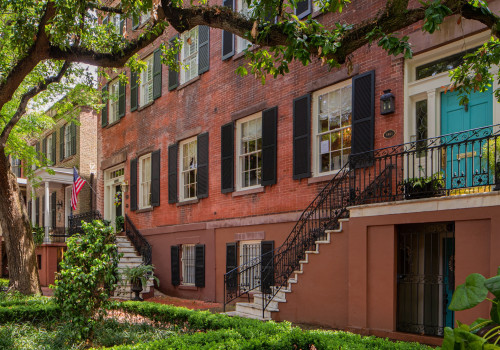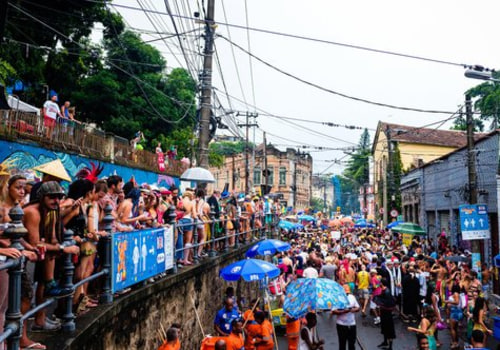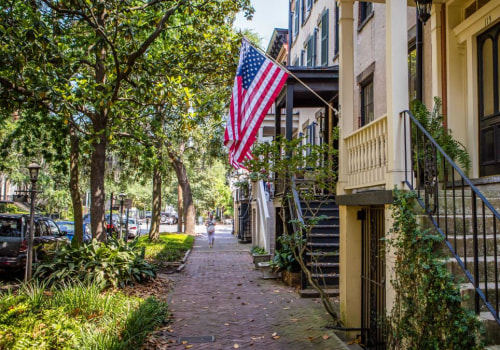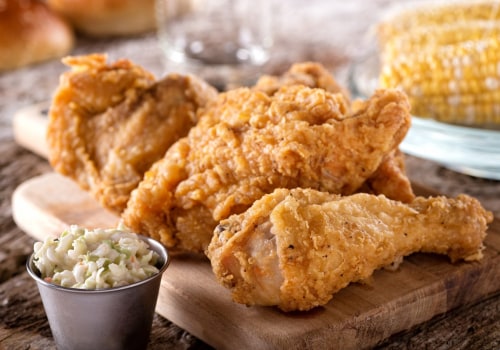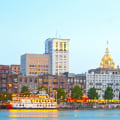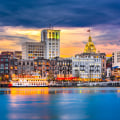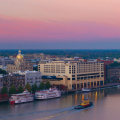Astonishing landscapes, historic monuments, fantastic food and legendary Southern hospitality are just a few of the many reasons to visit Savannah, Georgia. Savannah, Georgia, one of the first planned cities in the United States, is a southern getaway located on the Georgia coast. In this historic city, art, architecture, fashion boutiques, electrifying entertainment and haunted stories create an experience like no other. On February 12, 1733, General James Oglethorpe and the colonists from the ship Anne landed at Yamacraw Bluff and were greeted by Tomochichi, the Yamacras and Indian traders John and Mary Musgrove.
Mary Musgrove often served as an interpreter. The city of Savannah was founded on that date, along with the colony of Georgia. In 1751, Savannah and the rest of Georgia became a royal colony and Savannah became the colonial capital of Georgia. Savannah, a thriving seaport throughout the 19th century, was the sixth most populated city in the Confederacy and the main objective of the General William T.
Early on December 21, 1864, local authorities negotiated a peaceful surrender to save Savannah from destruction, and Union troops entered the city at dawn. For years, Savannah was home to Union Camp, which housed the world's largest paper mill. The plant is now owned by International Paper and remains one of Savannah's major employers. Savannah is also home to Gulfstream Aerospace, a manufacturer of private aircraft, as well as other large industrial companies.
Morris Multimedia, a newspaper and television company, is also based in Savannah. Beyond its architectural importance as the largest historically restored urban area in the country, the city of Savannah has a rich and growing performing arts scene, offering cultural events throughout the year. The Savannah International Trade and Convention Center is located on Hutchinson Island, in front of downtown Savannah and surrounded by the Savannah River. The Belles Ferry connects the island to the mainland, as does the Talmadge Memorial Bridge.
The Savannah Civic Center on Montgomery Street hosts more than 900 events each year. Savannah has numerous historic places of worship. Founded in 1733, with the establishment of the colony of Georgia, Christ Church (Episcopal) is the largest continuous Christian congregation in Georgia. Among its first rectors were Methodist evangelists John Wesley and George Whitefield.
Located on the original site in Johnson Square, Christ Church continues as an active congregation. The Independent Presbyterian Church, which was founded in 1755, is located near Chippewa Square. The church's current sanctuary (the third) dates from the early 1890s. Among the opulent buildings that succumbed to the fires were the mansions of Bonaventure Plantation and Greenwich Plantation. Colonial Park Cemetery was the city's main cemetery for much of the 18th century, when Georgia was a British colony.
Laurel Grove Cemetery, with the graves of many Confederate soldiers and African-American slaves, was the main municipal cemetery in Savannah during the 19th century. Bonaventure Cemetery is a former plantation and the final resting place of some illustrious Savannahs. Savannah is also home to Mordecai Sheftall Cemetery and Levi Sheftall Family Cemetery, both from the second middle of the 18th century. Parts of the East Coast Greenway, a 5,000-kilometer (3,000 mile) long trail system from Maine to Florida, run through Savannah.
Savannah is also home to most of the schools in the Chatham County school district, the Savannah-Chatham County Public Schools. Among the most prominent high schools in Savannah-Chatham County are the following. Public schools are indicated with an asterisk. Amtrak operates a passenger terminal in Savannah for its Palmetto and Silver Service trains, which run between New York City and Miami.
Two southbound and three northbound trains make daily stops at the Savannah terminal. The city's location provides tourists with access to coastal islands and the banks of the Savannah River, both popular tourist destinations. The trail meanders through white sand and ridges, and sometimes borders the southern channel of the Savannah River. While Savannah has its must-see landmarks, you'll be pleased to discover that part of the historic charm that so excites everyone comes from its hidden gems.
When you're tired of shopping and eating something to eat, head to Rousakis Riverfront Plaza for sweeping views of the Savannah River and the colorful Savannah Belles ferries going to and from Hutchinson Island. If you're working remotely this year, consider moving your home office to a unique location in Savannah. Enjoy a mojito on the upper deck while watching large cargo ships sail the Savannah River, or immerse yourself in a botanical-inspired cocktail atop the Plant Riverside district's charming rooftop myrtle and rose garden. Built between 1808 and 1812 to protect the city from attacks by sea, it was one of several Confederate forts that defended Savannah from Union forces during the Civil War.
Andrew Brochu, chef at one of Chicago's most acclaimed restaurants, is taking root in Savannah to open this new Starland District establishment. Winters in Savannah are mild and sunny, with average daily highs of 16 °C (61.4 °F) in January. Spend a quiet afternoon on Savannah's historic River Street and explore the shops and restaurants found in the old cotton warehouses that line the cobbled street. Immerse yourself in the heritage and culture of Gullah Geechee in Savannah's Moon River district at the Pin Point Heritage Museum, which educates visitors about the freed slaves that are part of coastal communities.
British troops took the city in 1778, and the following year, a combined force of American and French soldiers, including Haitians, failed to defeat the British at the siege of Savannah. Seasonally, Savannah tends to have hot and humid summers, with frequent (but brief) thunderstorms that form in warm, tropical air masses, which is common.
